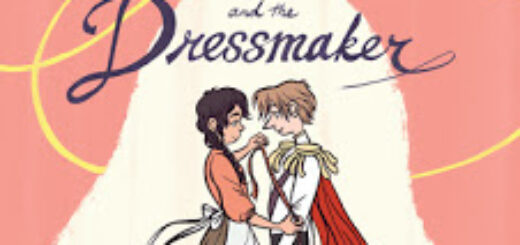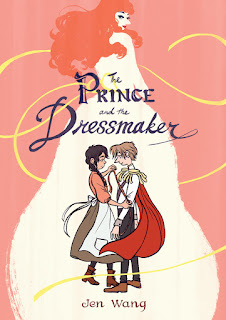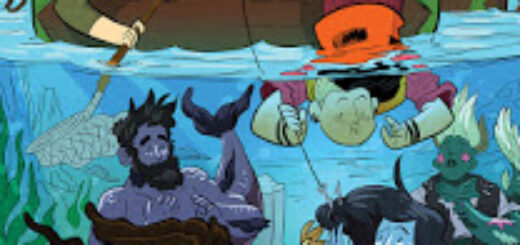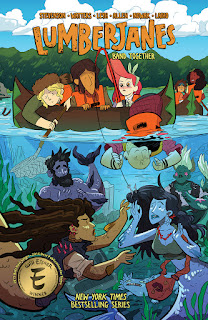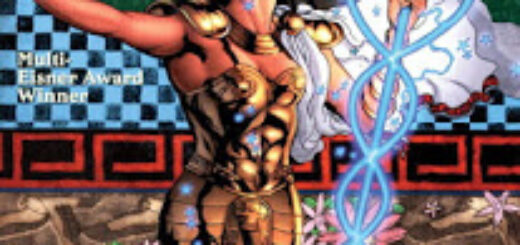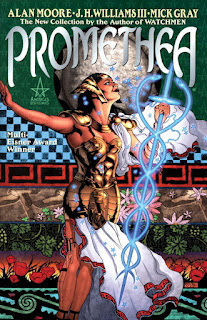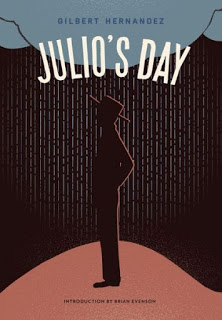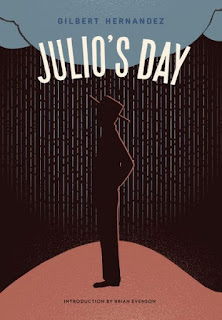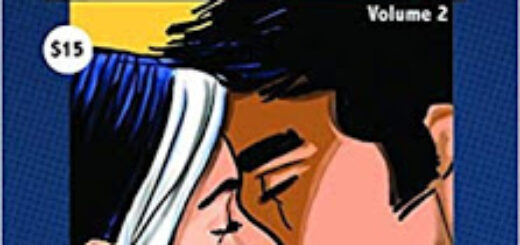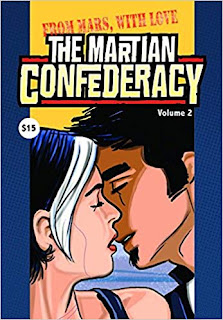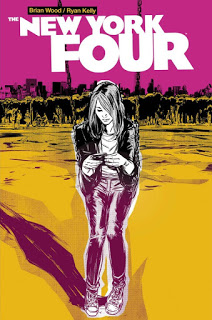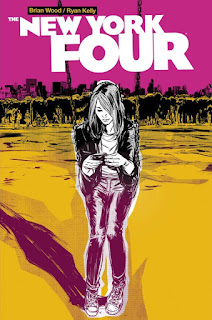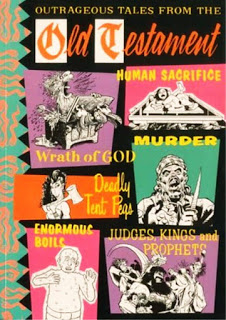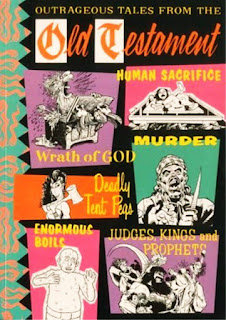Book-A-Day 2018 #328: The Prince and the Dressmaker by Jen Wang
There was an era in books for younger readers where the standard message was to conform, to become just like everyone else was supposed to be, to follow the prescriptions of life and fit your feet to the path. And we all make fun of those books now, when we see them or think about them.
We’re in the opposite era now: the standard story is that what a person wants must be right, because that person wants it. And putting it that baldly obviously shows up the inherent problems, but we generally don’t worry about them. Tell kids they can do anything, we say. They’ll figure out all of the ways that isn’t true for themselves eventually; we don’t need to crush their dreams directly.
Those stories are also regularly about exceptional, unique people — coddled princesses and lost princes, prophesied heroes and fated liberators. Is that because we all believe we are princesses at heart, or because those are the people whose dreams aren’t crushed in the end?
Don’t get me wrong: it’s good to tell kids they have options, that they can aim for the stars. But I don’t think we’re telling them that 99% of them will fail, that the stars are out of their reach, and that they’ll, at some point, need to trim their sails to catch a wind that actually exists. And so I wonder about the diet of stories we’re giving them.
Jen Wang is telling a “be who you feel you need to be” story in her new graphic novel The Prince and the Dressmaker . And, in that Oscar Wilde sense, it’s fiction, so they can become those things. One of them, of course is a prince at the start, which gives one a certain leg up in the world: it’s easier to find your perfect self when you’re not struggling to put food in your belly and clothes on your back.
It’s also easier when you’re in something like a fairy tale, which this is. It’s set in “Paris, at the dawn of the modern era” — maybe the middle of the long quiet 19th century, maybe later, maybe earlier, but those “maybes” are the point. The Prince is Sebastian, of Belgium, who you will not find on the family tree of the actual Belgian monarchy. He’s in Paris for the summer with his aunt, a French Countess, and will have the usual round of balls and events for his sixteenth birthday.
The underlying reason why he’s in Paris: to choose a wife. His royal parents are fictional/modern enough to let him pick his own match (within reason, and from a carefully curated list of the right young European noblewomen), but they’re traditional/realistic enough to want to get the betrothal settled before much more time goes by. Sebastian isn’t terribly interested in this — is any fictional prince or princess ever happy to engage in the round of who-should-I-marry? — for reasons that will be very obvious very quickly.
Frances is a young woman from outside Paris, driven to become a dress designer. She’s working, at what seems to be a low level, in a high-end shop, and gets her chance with a last-minute design for the Prince’s first ball: the willful Lady Sophie Rohan ruined her dress riding and in a fit of pique asks Frances to make her “the devil’s wench.”
Frances is too green to realize actually doing this would be horrible for her fledgling career, and does it. The dress causes a scandal, and Frances is about to be fired when a mysterious man comes around, looking for the designer of the scandalous dress. He has an equally mysterious client who wants to hire that designer exclusively to design for her, and Frances jumps at the offer.
Of course, despite an initial attempt at anonymity, she soon learns her new client is Sebastian. But she wants to design, and Sebastian wants to wear exactly the kind of flashy, exciting dresses she wants to make. And, at first, it all goes well: Frances gets experience and confidence, and Sebastian gets to go out in public as Lady Crystallia and become a minor celebrity.
But Frances can’t advance professionally as “Lady Crystallia’s” dressmaker, because that would connect Crystallia to Sebastian. And Sebastian’s parents are demanding he spend more time wooing all of those young women, who he has no interest in or time for. (He’s spending his nights as Crystallia, and his days sleeping and recovering.) It all is going to smash, and it does.
Wang finds her way to a happy ending, and one that’s more in keeping with the time and her protagonists’ very different social positions than I expected. The Prince and the Dressmaker is much more successful than I was worried it could be; it is a book that tells the you-can-be-whatever-you-want lesson, but it doesn’t skimp on pointing out the hard work and sacrifices needed along the way. (Plus a fair bit of luck, a sympathetic creator, and no small bit of wealth and position — but that’s what makes it fiction.)
I should have expected that from the author of Koko Be Good , which had a similarly complex central male-female relationship that didn’t resolve in conventional ways and a more nuanced view of success and the pursuit thereof. Wang is also a fine cartoonist, particularly good here with crisp, openly emotional faces drawn with few lines and big expressive eyes. This is a book telling that currently-popular story, and in a way designed to appeal to young readers who want to believe that they’ll get all of their dreams — but it’s a fine book despite that.
![]()
![]()
Reposted from The Antick Musings of G.B.H. Hornswoggler, Gent.

